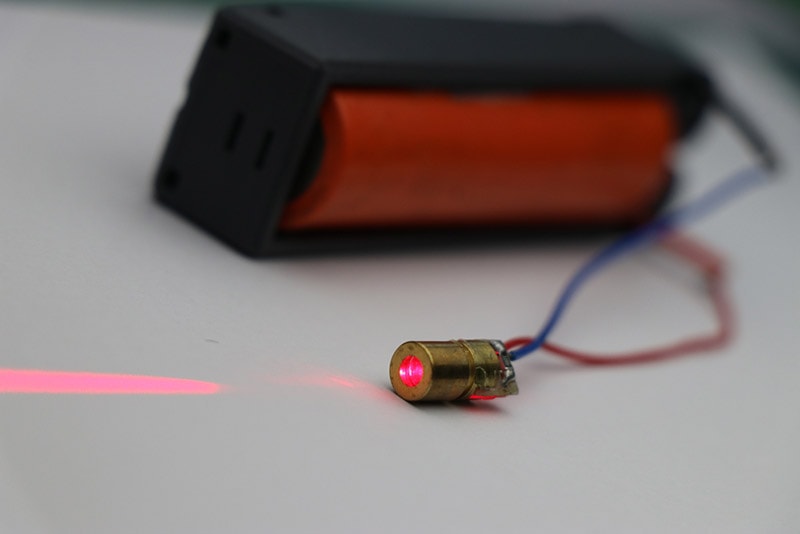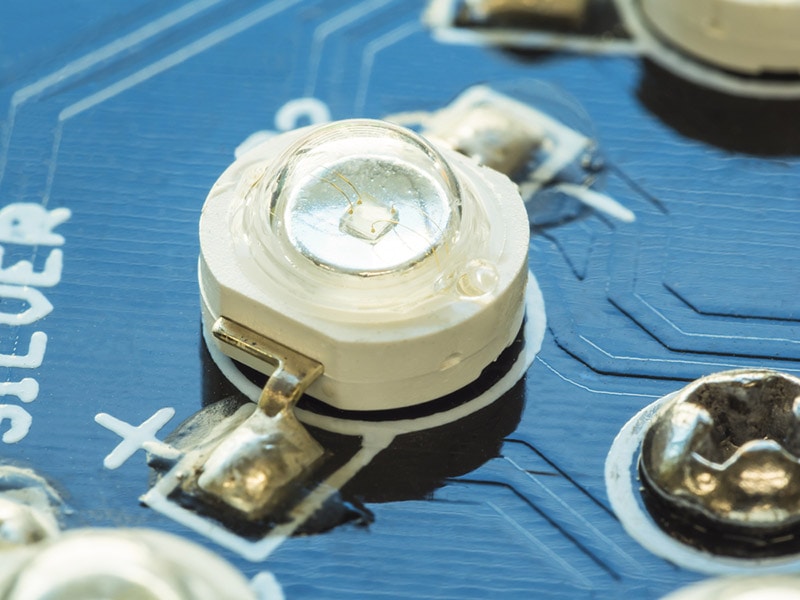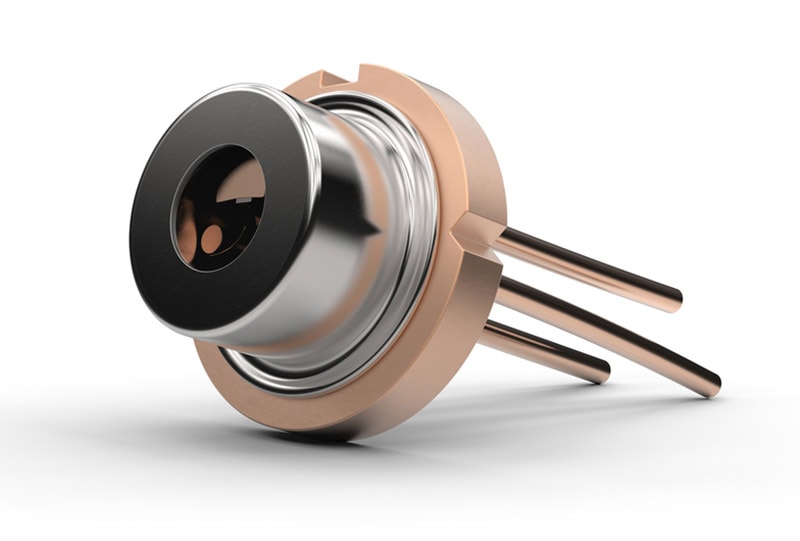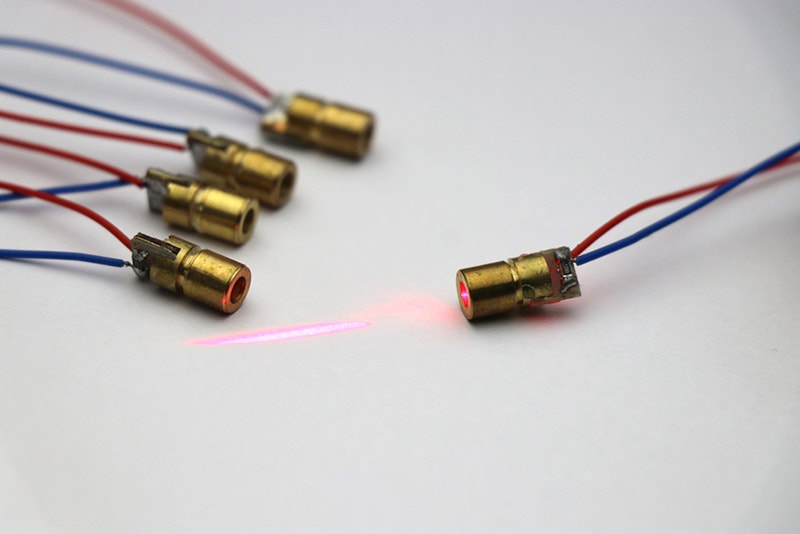What Is A Diode Laser? The Interesting Answer!
Last Updated on

If you are looking into lasers, one of the most common types is the diode laser. But what exactly is it, and why is it so popular? In short, diode lasers are semiconductors that convert electrical energy into laser energy.
We go over more for you here, and we also highlight a few different diode laser types.

How Does It Work?
A diode is a type of laser, but what makes it a diode laser all comes down to how it works. A diode laser generates laser radiation by using a semiconductor.
While the exact working of the semiconductor is a bit complicated, a diode simply refers to the fact that a semiconductor is what generates the radiation, which in turn, produces visible light and is the laser.
The semiconductor needs to produce radiation where all the waves are of the same frequency and phase to stay visible, and the semiconductor is by far the most critical part of a diode laser.


What Are the Different Types of Diode Lasers?
Today, there are quite a few different types of diode lasers. The most common ones include the multi-longitudinal mode (MLM), single longitudinal mode laser, single longitudinal mode with disturbed feedback laser (DFB), a DFB laser with an external modulator, and a vertical-cavity surface-emitting laser.
The differences between the different types of diode lasers all come down to their construction and overall capabilities. But while they’re built a little differently and have different ranges, they all serve the same function.
For most people, the kind of diode laser doesn’t matter. The only time it does matter is in precise applications when you need a specific range or a specific stability of operation where one type of diode laser might perform better than another.
Finally, while options like the DFB laser perform better than the more basic MLM laser, there’s also a significant difference in price for this improved performance. Unless you need the extra power and stability that these diode lasers offer, there’s no reason to overpay for one.

Where Is It Used?
While most people don’t think too much about what kind of laser is inside a device, you can find diode lasers all over the place in a wide range of applications.
For starters, diode lasers have prominent applications throughout the medical field. You can find them in laser hair removal and oral and other types of soft tissue surgeries. But while they excel in these fields, those are not the only places where you can find diode lasers in use.
Laser diodes are also in CDs and DVDs, laser printing, laser scanning, barcode readers, and even fiber optic communications. Laser diodes are the most common type of laser on the market today, and you can find them all over the place.


Advantages of Diode Laser
Laser diodes have several advantages that have led to them becoming the most popular type of laser out there. First, they’re extremely small and lightweight, which means you can easily put them in many different places.
Second, they don’t require much power compared to most other laser types. This means you won’t need to worry about racking up a huge electricity bill if you use them, and you can even store enough power in a small battery to operate a laser diode for quite a while.
Moreover, they’re not the highest-intensity lasers out there. While that might seem like a drawback, it means they’re safe to use in most applications without many safety precautions. That’s a big deal when you’re talking about putting these lasers all over the place!

Disadvantages of Diode Laser
While laser diodes are the most popular type of laser out there, they do have a few drawbacks for certain applications. First, they produce a wide-angle beam instead of a narrow beam of light. This is great for things like barcode readers, but if you need a precise laser application, it’s not the best.
Additionally, while the low intensity makes them a safer choice, it also limits what they can do. Higher-intensity lasers can work faster and cut through more objects, which isn’t the case with a diode laser.


FAQs
Now that you know more about diode lasers, it’s only natural to have a few questions. We understand, and here are the answers to common questions.
What Wavelengths Can a Diode Laser Produce?
Diode laser wavelengths vary and can range anywhere from 810 to 1,064 nm for medical applications, but in everyday devices, like barcode readers or CD readers, they’re typically lower, around 600 to 800 nm.
Are Diode Lasers Safe?
While you need to be careful with any laser, diode lasers are among the safer options out there. But keep in mind that the wavelength and power from a laser diode can vary quite a bit, so knowing the exact intensity of the laser diode that you’re working with is always a good idea.

What Type of Energy Do Diode Lasers Produce?
Like all lasers, diode lasers produce electromagnetic radiation. In fact, it’s right in the name, as laser stands for Light Amplification by Stimulated Emission of Radiation.

A Quick Reference Guide
- Small and lightweight
- Low voltage requirements
- Low-intensity bulbs
- No high-intensity bulbs
- Can get expensive

Conclusion
While most people don’t think too much about the types of lasers inside of things, the more you dig into it, the more interesting it all becomes. Lasers are a relatively new invention and have only recently started to show up in everyday applications.
That’s due in large part to the diode laser, and it’s why it’s worth learning more about these innovative devices.
You might be interested: When Were Lasers Invented? History of the Laser
Featured Image Credit: Pixel Enforcer, Shutterstock
About the Author Robert Sparks
Robert’s obsession with all things optical started early in life, when his optician father would bring home prototypes for Robert to play with. Nowadays, Robert is dedicated to helping others find the right optics for their needs. His hobbies include astronomy, astrophysics, and model building. Originally from Newark, NJ, he resides in Santa Fe, New Mexico, where the nighttime skies are filled with glittering stars.
Related Articles:
Binocular Magnification Chart: Numbers & Distances Compared
What Is the Best Binocular Magnification for Hunting? Optical Features Explained
When Were Binoculars Invented? History, Today & Future
Can You Use Binoculars to Look At Stars? How to Choose the Right Pair
How to Clean a Refractor Telescope: Step-by-Step Guide
How to Clean a Telescope Eyepiece: Step-by-Step Guide
How to Clean a Rifle Scope: 8 Expert Tips
Monocular vs Telescope: Differences Explained (With Pictures)
